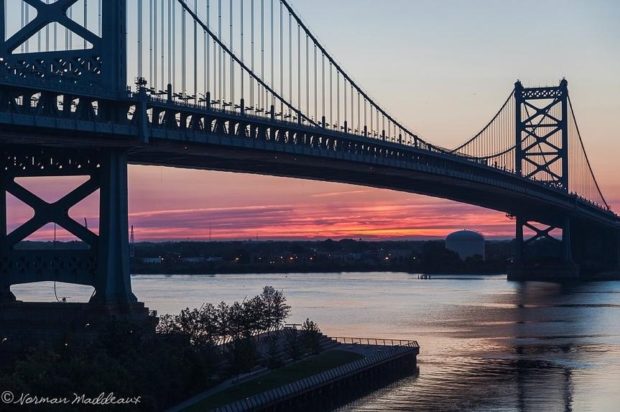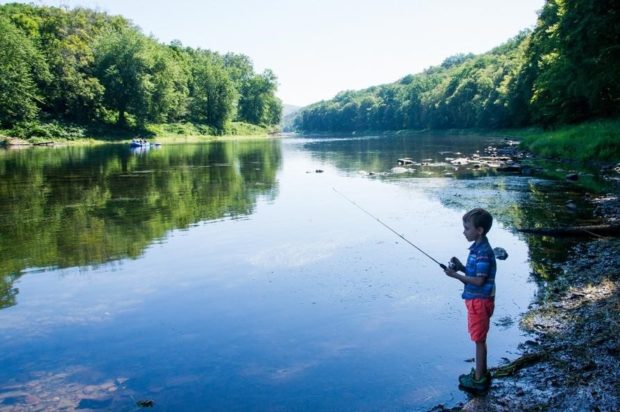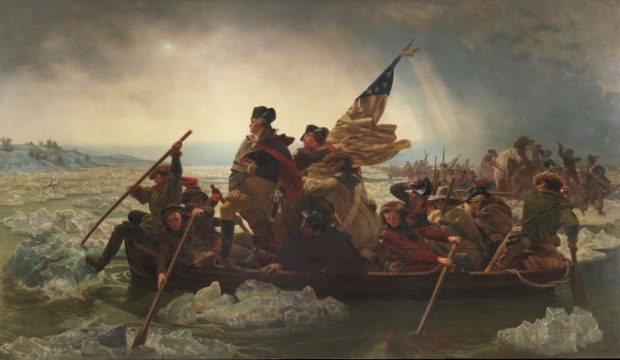We have much more to do and your continued support is needed now more than ever.
Six Reasons to Stand Up 4TheDelaware

Imagine this: It’s a warm summer day. The Delaware River meanders past the park’s banks. The sound of birds calling out to one another fills your ears. The sun is slowly setting, filling the sky with pink and orange shades. Your child shouts, “Please don’t make me leave!” You smile, knowing that they will always remember this day. We all want future generations to experience a clean, safe Delaware River, but we need your help to make sure they can.
The National Wildlife Federation’s 4TheDelaware campaign was introduced in early 2018. The campaign is asking the four governors of the states that share the river (NJ, NY, PA and DE) to come together to protect the Delaware River. Here are six reasons why you should stand up 4TheDelaware with us.
1. Fish and Birds Need Our Help
The Delaware River hosts diverse wildlife that depend on it to survive and thrive. From river otters to bald eagles, you never know what you may encounter on the Delaware. The region is also part of the Atlantic Flyway, which is an important flight migration route for birds. Over 200 avian species rely on this area at some point during their lifespan.

2. We Need Clean Water
Over 15 million people – almost five percent of the nation’s population – depend on the Delaware River for clean drinking water. This includes two major cities, New York City and Philadelphia. As the cities continue to grow, the demand for clean water will too. We want to ensure everyone within the watershed has access to clean water now and in the future. We would be up the ‘river’ without it!

3. Having Clean Water Means Money in Your Pocket
The Delaware River and its tributaries contribute more than $22 billion in annual economic activity. The river sustains local industries and businesses including ski lodges, microbreweries, and restaurants. Everyone wins with cleaner water!

4. George Washington Crossed it But Only We Can Protect it
George Washington changed the course of history after crossing the Delaware on December 25, 1776 during the American Revolutionary War. This was Washington’s first move in his surprise attack against the Hessian forces in Trenton, New Jersey. Washington’s victory is attributed to him crossing the Delaware River, which was extremely challenging due to the icy conditions.
The Delaware was pivotal for the creation of this country. Each year, hundreds of thousands of tourists visit its landmarks. Imagine as you watch the reenactment of Washington Crossing the Delaware that old tires knock up against his ferry, chemicals in the water wash dead fish ashore at your feet, and the historic buildings crumble behind you.
Thanks to hard work the Delaware is the cleanest its been in years, but in order to protect the places that show what it means to be an American, we need your voice.

5. It Provides Year-Round Fun
Whether you enjoy bird watching, kayaking, taking pictures or fishing, there’s something for everyone to enjoy. There are activities to participate in year-round too. In the summer months, many people spend time on the water. In the winter months, many people go bird watching. The Delaware River serves as an outdoor recreation outlet for thousands of people each year – and can be yours too.

6. A Success Story in the Making
From being trashed to treasure, the Delaware River is making a huge comeback. Approximately 1 million pounds of waste were being dumped into the Delaware River daily in the 1960s. More than half of the waste was from sewage treatment plants, which created a dead zone in the Upper Delaware. However, in 1972 the Clean Water Act was passed, making it illegal to dump any pollutants into the river.
Thanks to an enormous group effort, funding, and dedication, the river is now making great strides decades later. However, we still have more work to do to make sure the Delaware River continues to progress. Further protections for the Delaware River’s habitat, wildlife and, clean water are vital for its future. Learn more about how you can support this campaign at www.4thedelaware.org.






















